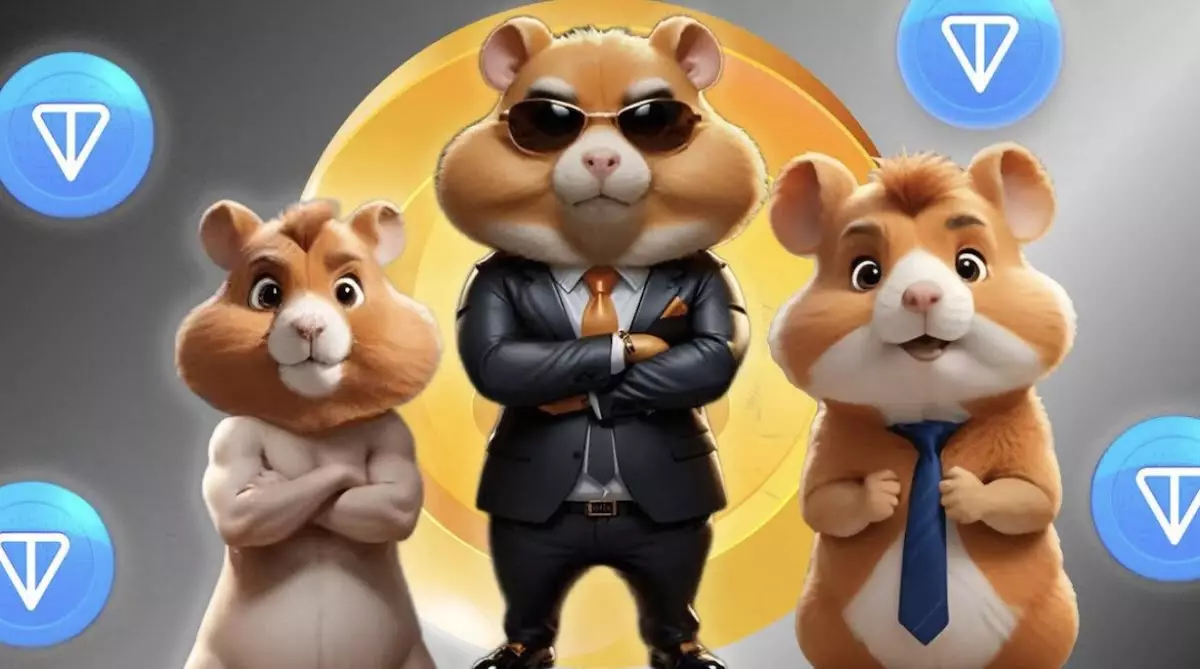In a notable development within the blockchain gaming sector, the Telegram clicker game Hamster Kombat has unveiled a comprehensive roadmap that extends to 2025. This ambitious plan reflects the team’s commitment to enhancing the gaming experience by integrating Non-Fungible Tokens (NFTs), establishing a Web3 gaming platform, and creating a sustainable token economy. Positioned as more than just an idle clicker game, Hamster Kombat envisions a transformative gaming ecosystem that bridges the gap between user-friendly Web2 experiences and the decentralized principles of Web3.
The introduction of NFTs in Hamster Kombat represents a significant shift in player interaction and ownership. Players will not merely engage with the game; they will also have the opportunity to own, trade, and monetize unique items acquired through gameplay or purchase. This development fosters a sense of ownership, allowing players to connect more deeply with their gaming experience. Additionally, the team plans to launch an advertisement network designed to generate increased revenue for the project, which could further incentivize player involvement and investment.
As the game evolves, competitive elements are also expected to be introduced, including clan championships that could open doors for player collaboration and competition. This shift toward a more competitive environment is likely to attract a diverse audience, including collectors and gamers eager for a more engaging experience.
One of the most exciting propositions in Hamster Kombat’s roadmap is the establishment of a holistic Web3 gaming platform. This initiative seeks to transcend the limitations of traditional gaming by incorporating decentralized and transparent practices that resonate with the ethos of blockchain technology. By doing so, the developers are positioning Hamster Kombat as a pioneering force in the game industry, setting standards that may influence future projects.
Central to this vision is the game’s token economy, particularly the strategy centered around the HMSTR token. The team is committed to utilizing revenue generated from its advertising network for buybacks and token burns. This approach aims to restrict the overall token supply, thereby fostering scarcity. Such a move is expected to elevate the market value of HMSTR and enhance its desirability among investors and players alike.
Despite the forward-thinking strategies, the recent airdrop of HMSTR tokens has generated mixed reactions among the player base. Out of 300 million gamers who have engaged with Hamster Kombat since its launch, only 131 million were eligible for the token distribution, leading to discontent among many who felt unfairly excluded. Additionally, around 2.3 million users were disqualified over allegations of cheating, which has sparked debate regarding the fairness of the distribution process.
Many players expressed disappointment with the scale of rewards they received during the airdrop, culminating in a swift market reaction—HMSTR token prices plummeted significantly post-release. Reports indicated a staggering 41% drop from an initial price of $0.012 according to CoinGecko, while CoinMarketCap recorded a 25% decline from $0.009. This volatility highlights the challenges Hamster Kombat faces in maintaining a stable and attractive market presence.
In light of the recent fluctuations, the Hamster Kombat team is proactively planning for the game’s second season and aims to integrate additional titles into its ecosystem. By diversifying its offerings, the studio seeks to bolster player interest and stabilize token prices over time. Critical milestones in the roadmap point to an NFT marketplace and an overarching game ecosystem designed to empower players and foster a vibrant economy.
The evolution of Hamster Kombat is closely tied to the broader blockchain industry’s development. As Web3 gaming steadily garners attention, players can expect a gameplay experience characterized by transparency and community involvement that starkly contrasts with traditional gaming models. Hamster Kombat positions itself as a trailblazer on Telegram, potentially serving as a template for future blockchain games aiming to harmonize gameplay, economic viability, and user engagement.
As the months and years unfold, the gaming community will be observing closely to see if Hamster Kombat’s strategies—focusing on NFTs, token buybacks, and community-centric experiences—translate into successful pricing outcomes that excite fans and investors alike. The journey ahead is poised with challenges and opportunities that could define not just the game’s trajectory but also the landscape of blockchain gaming itself. With its innovative approach, Hamster Kombat stands to be a significant player in the emerging Web3 space, cementing its role as a catalyst for the future of gaming on platforms like Telegram.















Leave a Reply